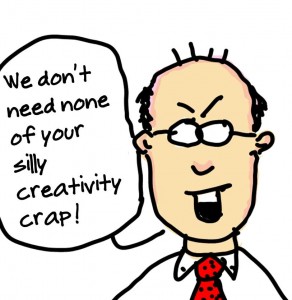 Last week I talked about the first phase of the creative process (divergence), which consists of stimulating new thinking by diversifying and exploring. The second phase in the process is convergence, which involves refining and choosing the best possibilities from the ideas generated during the divergence phase.
Last week I talked about the first phase of the creative process (divergence), which consists of stimulating new thinking by diversifying and exploring. The second phase in the process is convergence, which involves refining and choosing the best possibilities from the ideas generated during the divergence phase.
In today’s global economy, market opportunities abound. For most companies, the problem is not coming up with enough good ideas. It’s deciding which ones to follow through on. Convergence tools help to make sense of what often seems like an overwhelming number of possibilities. They enable you to narrow the range of choices in order to make an intelligent decision. And they provide a starting point from which to implement those decisions.
To get the most out of the convergence phase, I recommend using the SOARS technique:
Sort To make sense of all the different possibilities in front of you, start by grouping them into meaningful categories. These categories might be related to time, feasibility, market demand, availability of resources, type of possibility, or any other category that would help to bring order out of the chaos.
I like to use a three-color sorting technique to simplify the sorting process. Green represents ideas that clearly fit with your criteria. Yellow is for ideas that have some fit but probably need further thought. Red identifies ideas that do not fit the criteria.
Order Once you’ve sorted ideas by category, rank them against pre-established criteria to create an order of preference. A basic quadrant chart that incorporates two important criteria offers a simple yet powerful way to see which ideas best fit the criteria. For example, if you choose “cost†and “feasibility†as your criteria, you end up with four distinct quadrants in which to place your ideas:
- High cost, low feasibility
- High cost, high feasibility
- Low cost, low feasibility
- Low cost, high feasibility
You can also use other criteria — such as time to market, probability of success, relevance to customer wants and needs, anticipated return on investment, etc. — to help you narrow down the list.
Adapt When likely possibilities have been identified, they can be expanded and adapted to create even better ideas. “Take Away” offers a simple tool for engaging in this process. Identify all the critical components of an idea, then take one away and see what you would have to do if that component wasn’t available or didn’t exist. For example, if you didn’t have access to electricity, you might start thinking about phones that didn’t have to be plugged in.
Refine Now it’s time to start critiquing the idea by identifying weak spots and potential failure points. The goal here is to “bullet-proof” an idea before deciding to move forward with it. Start by thinking of all the ways the idea could fail, what external events might create a disaster, or who could and/or would say “no” to the idea. Then begin to brainstorm ways to avoid these possible obstacles. If the obstacles that remain are too complex, costly or difficult to overcome, the idea doesn’t pass muster.
Select “Dot Voting” offers a simple technique for selecting ideas. Make all of the choices available, and give each participant a certain number of dots to vote with. If you’ve established the criteria in advance, this process can be very effective for selecting the best ideas and getting buy-in from people as they see that certain concepts match the criteria more than others.
Keep in mind that ideas are only ideas until they get implemented, and implementation requires that someone take ownership. Getting the right people to take ownership of an idea is a critical piece of the process.
Also, it helps to have a process and/or methodology for turning your newly selected ideas into practical products or services. Start by identifying what innovation means to your organization. Why is it important and what will happen when you achieve it?
Choose an innovation model or approach that fits your type of business and your available resources to drive your innovation efforts. Then identify metrics for inputs, development, and output. If you don’t measure it, you can’t manage it.
Mobilize the organization by clarifying and communicating your vision of what successful innovation looks like in your business. Provide the tools and support people need. Hold them accountable for new ways of thinking and working. And keep people inspired by sharing stories of success and failure.
Hopefully, people in your organization are coming up with lots of new ideas. When they do, the SOARS technique will make it much more likely that you act on the best ones.






